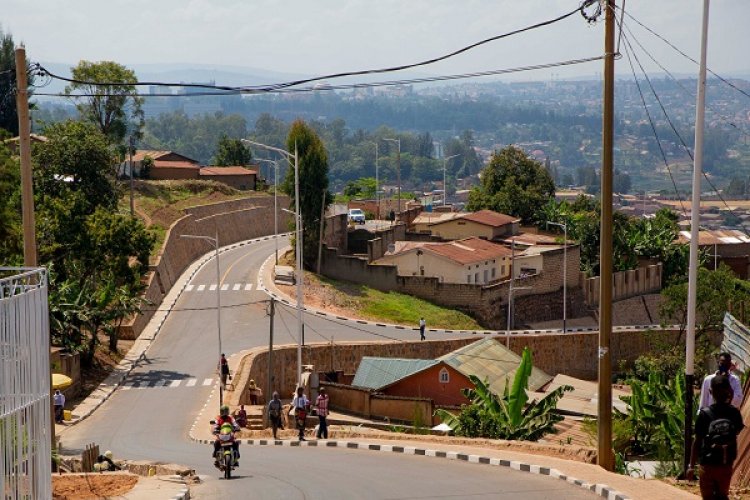Do you live in Kigali?
Imagine your kids, those of your neighbors or friends at school learning about wildlife species by solely looking at photographs because these creatures can no longer be sighted in real life.
Imagine young and incoming generations inheriting a beautiful city without birds… where species once common in our backyards and neighborhoods are only seen in books, on internet or TV screens.
This is a reality parents and educators at most urban kindergartens know better of and have had to contend with in their routines with curious kids.
If you doubt it, just try recalling the last time you sighted or heard once common neighborhood birds such as Ikibiribiri (coucals), Igishwi (sparrows), Agaca (small birds of prey), Inyombya (robin-chats) or Umusure (mousebird).
Do you ever wonder what befell Sakabakas (black kites) Inuma (doves), Intashya (white-rumped swift), Nyirabaraza (Hadada ibis), or Ibihunyira (owls)?
Magic tail
What about Matene (pin-tailed whydah) which was much loved by young boys for its ‘magic’ tail?
Not long ago these species used to wake people up every morning. Their presence told the whole story about the quality of life we all live, and so does their absence.
ALSO READ: Big salaries, posh offices and cars eating up funding for conservation in Africa
Birds were quickly replaced by noisy and polluting vehicles after years of encroachment on urban wetlands that hosted bushes and trees. The latter were to birds home and source of basic elements for their survival.
Not long ago bird species used to wake people up every morning. Their presence told the whole story about the quality of life we all live, and so does their absence.
Until the enactment of the 2005 environment act that outlawed all polluting activities on wetlands, commercial and residential settlements mushroomed on these critical ecological ecosystems.
It was the case all across valleys of the capital from Gikondo, Mulindi, Gatsata, Nyabugogo to Kinamba, and other areas.
These had also become perfect sites for garages, petrol stations, industrial establishments and warehouses, activities that have for years fomented disaster for not just birds and animal species but equally created trouble that was waiting to happen to thousands of city dwellers.
In particular, garages, petrol stations and industries were responsible for oil spills and untreated industrial waste whose real effects have not been documented to date.
Pollution was further worsened by infamous polythene bags that flooded the local market. Their manufacture, import, sale and use has since been banned.
New revelation
This could explain why, of late, there has been public excitement about what’s possibly the return of birds to Kigali, and its potential to turn the capital into a world bird watching destination.
In the newly published book titled Falling for Birds of Kigali, Will Wilson, the Kigali-based wildlife photographer and writer suggests that there are now many places to watch and photograph birds.
The former military man with 20 years in the British army turned his skills of locating the enemy and shooting the rifle on target into that of locating wildlife and using his camera to shoot birds in flight.
There are over 250 bird species in Kigali alone, he tells this writer. He adds that it says a lot about the success of recent conservation and wetland restoration work, and in particular the rehabilitation of Nyandungu — now an Ecotourim park in the outskirts Kicukiro District.
“The birds are indicators of the health of the environment. Before Nyandungu was restored all the birds had left. The restoration re-introduced plants and trees that created the environment wildlife can come back to (….) birds are the only types of wildlife that you can see on daily basis. All the others are hiding,” says Mr. Wilson.
ALSO READ: Youth demand lead roles, funding in drive to fight climate change
Local conservationists say the development signals that the exercise by government and partners to rid wetlands of polluting activities, which intensified over the past three years, are paying off albeit resulting in loss of livelihoods and business, in instances.
Memories of recent crackdown on over 7,000 residential and business structures deemed to be within boundaries of wetlands are still fresh among residents across parts of the city such as Nyabisindu, Giticyinyoni, Karuruma, and Rukiri, and others.
Clearing the structures, however, paved the way for authorities to plan rehabilitation works similar to what was carried out in Nyandungu.
This publication learnt that five more wetlands namely Gikondo, Rwampara, Rugenge, Kibumba and Nyabugogo are lined up for rehabilitation under a city-wide project for which government has secured $23 million from World Bank and other partners.
However, overall costing will be arrived at upon completion of the on-going feasibility studies to also help in the fund mobilization, revealed Faustin Munyazikwiye, deputy director general at Rwanda Environment Management Authority (REMA).
“We anticipate to conclude the studies by June, then we shall start rehabilitation in July and above depending on the funds that will be available,” he said.
Meanwhile, amid rise in birds’ numbers, Mr. Munyazikwiye said ecologists were assessing recovery status for other wildlife species, and the possibility of introducing mammals at rehabilitated wetlands.
ALSO READ: COP27: African youth issue list of demands










